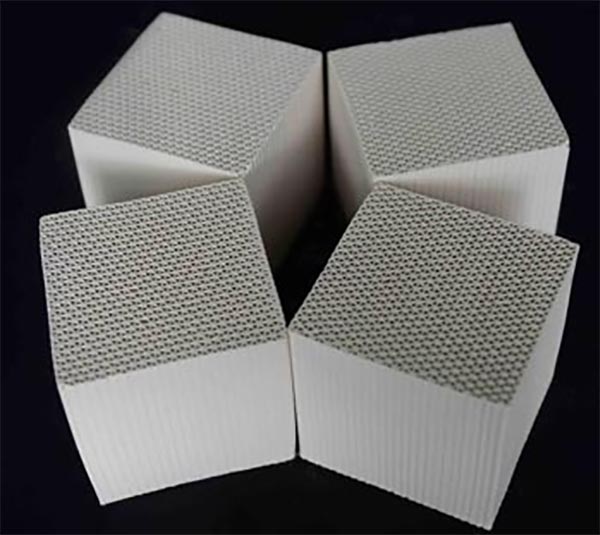
Honeycomb zeolite molecular sieve Its main material is natural zeolite, which is an inorganic microporous material composed of SiO2, Al2O3 and alkaline metals or alkaline earth metals. Its inner pore volume accounts for 40-50% of the total volume, and its specific surface area is 300-1000 m2/g. It has the characteristics of high temperature resistance, non flammability, good thermal stability and hydrothermal stability. It is an efficient molecular sieve carrier with good adsorption performance, no secondary pollution, and can be regenerated at high temperature, Compared with peers Activated carbon The efficiency is increased by 40%, which is widely used in the fields of adsorption, separation, catalysis and environment, and is more suitable for the treatment of organic waste gas with large air volume and low concentration. The adsorption material has a stable ozone decomposition ability, which significantly improves the decomposition efficiency of VOCs. The adsorption material first forms a special structural effect through the combination design of silver and manganese, which can decompose ozone into active oxygen atoms, and then react with VOCs molecules to form carbon dioxide and water.
Type A molecular sieve
Cubic crystal system structure similar to NaCl. If Na+and Cl - in NaCl lattice are replaced by β Cage, and replace the adjacent β Cage γ The crystal structure of A-type molecular sieve is obtained by combining the cages. 8 β The cage is connected to form a sodalite structure, if used γ The A-type molecular sieve structure is obtained by bridging the cages. There is a big one in the center α Cage. α There is an octagonal ring window in the channel between cages, with a diameter of 4 ∨, so it is called 4A molecular sieve.
If 70% of the sodium ion on 4A molecular sieve is exchanged by Ca2+, the eight membered ring can be increased to 5 ∨, and the corresponding zeolite is called 5A molecular sieve. Conversely, if 70% of Na+is K+exchanged, the pore size of the octagonal ring will be reduced to 3 ∨, and the corresponding zeolite is called 3A molecular sieve.
X-type and Y-type molecular sieves are similar to the compact hexagonal crystal system structure of diamond. If β Cage is a structural unit, replacing the carbon atom node of diamond, and hexagonal cylindrical cage is used to replace the adjacent two β Cage connection, that is, use 4 hexagonal column cages to connect 5 β The cages are joined together, one of them β Cage center, other 4 β The octahedral zeolite crystal structure is formed when the cage is located at the apex of the regular tetrahedron.
If this structure continues to be linked, the X - and Y-type molecular sieve structures will be obtained. In this structure, by β The large cage formed by the cage and hexagonal column cage is octahedral zeolite cage, and the window hole they communicate is a twelve membered ring, with an average effective pore diameter of 0.74nm, which is the pore diameter of X-type and Y-type molecular sieves. The main difference between the two models is that the Si/Al ratio is different, and the X-type is 1~1.5; Y-type is 1.5~3.0.


